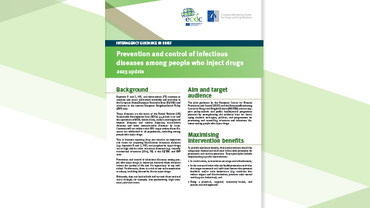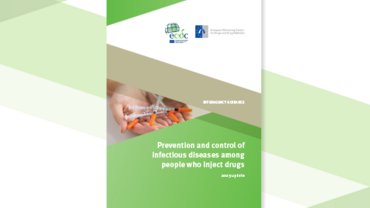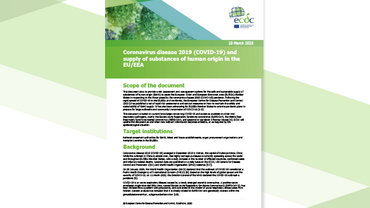Public health management of healthcare workers returning from Ebola-affected areas
This document outlines current monitoring processes for returning healthcare workers and provides different options for reducing the risk of transmission of Ebola virus disease from infected healthcare workers returning to the EU/EEA.
Executive Summary
The unprecedented magnitude and geographic extent of the Ebola virus disease (EVD) epidemic in West Africa has overwhelmed the local response capacity, posing an extreme challenge for epidemic containment [1]. This has led to an international response which has increased over time, although the epidemic is not as yet contained. Modelling studies suggest that further escalation of the response is needed in order to bring the epidemic under control [2].
The increasing international response has meant that a large number of European and international experts, particularly healthcare workers, have been deployed in affected countries through the Global Outbreak Alert and Response Network (GOARN) and various governmental and non-governmental organisations. Médecins Sans Frontières (MSF) has deployed over 700 individuals in the field [3] and many countries have deployed medical and military staff to the region [4-6].
Healthcare workers have been identified as being particularly at risk for Ebola infection and 450 have been infected, with 244 deaths in affected West African countries as of the 23 October 2014 [7]. The majority of these were local healthcare workers and many of these infections occurred following exposures in non-specialised units or in the community, rather than in Ebola treatment centres. A number of international healthcare workers have also been infected, with 15 having been medically evacuated to Europe or the United States for treatment, as of the 24 October 2014 [8].
Healthcare workers are at risk of infection at various points in healthcare settings:
- in the early stage of symptomatic disease when unprotected contact can occur, as patients are not very contagious [9] but their infection is not yet recognised
- in the later stages of disease, after EVD is confirmed, when patients may experience very high viral loads while undergoing contamination-prone invasive procedures as part of their medical care. This has been the case in Spain and the United States while taking care of repatriated or imported EVD cases [10,11].
Following the declaration of the Public Health Event of International Concern (PHEIC) on 8 August 2014, WHO recommended that affected countries conduct exit screening of all persons at international airports, seaports and major land crossings for unexplained febrile illness consistent with potential Ebola infection. WHO also recommended that there should be no international travel of known Ebola cases or contacts of cases, unless the travel is part of an appropriate medical evacuation [12]. Although these recommendations do not specifically address healthcare workers, any symptomatic healthcare workers are unlikely to travel outside of a medical evacuation. However, due to the 21-day maximum incubation period of EVD [9], healthcare workers might travel and develop symptoms in the days after leaving affected areas as happened in the USA, where a healthcare worker was screened on arrival in a New York airport and was asymptomatic, but developed symptoms days after arrival in New York [13].
This document outlines current monitoring processes for returning healthcare workers and provides different options for reducing the risk of transmission of EVD from infected healthcare workers returning to the EU/EEA.







